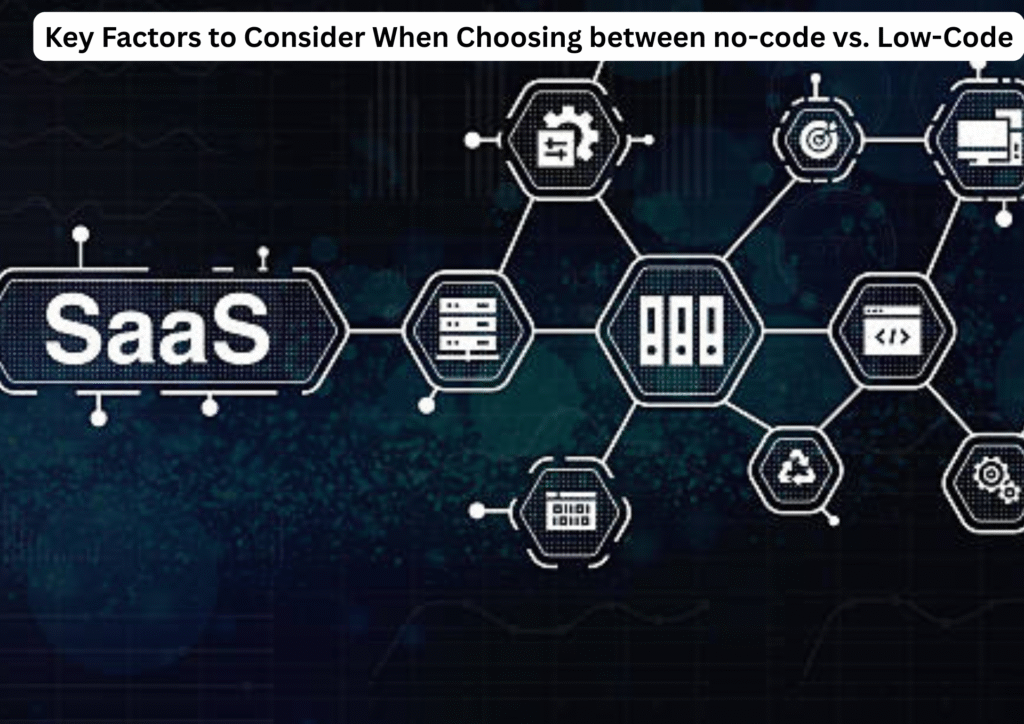In our recent post, we covered the best AI chatbots for customer care, and in doing so, we covered a list of tools. We understand that small businesses are racing to digitize at a record speed to stay in business. These tools range from online booking systems to automated customer service bots; every company, no matter its size, is finding new ways to work smarter, not harder. The tools leading this transformation are no-code and low-code platforms, which empower businesses to build software without traditional programming.
Here are some of our popular posts: Top 10 best website builders, Best super foods for a healthy lifestyle, the unlimited list of free productivity apps, Best freelance site to find remote jobs, top 10 productivity hacks for entrepreneurs , 10 best side hustles to make extra money online, best online courses for learning digital skills, top 10 best free coding website
But here’s the big question: No-code vs Low-code for small businesses, which is better in 2025? Both promise to simplify development, save time, and reduce costs, but they cater to different needs and skill levels. Let’s explore how each approach works, what sets them apart, and how to decide which one fits your business best.
Why Code Tools Matter for Small Businesses in 2025

Imagine launching a new mobile app, automating your daily workflow, or designing a personalized customer portal—all without writing a single line of code. That’s not science fiction; it’s the reality of 2025.
With rapid advances in AI-driven automation and digital transformation, small businesses must act fast to remain competitive. The debate between no-code and low-code solutions for small businesses has never been more relevant. Choosing the right platform can determine how efficiently you innovate, scale, and serve your customers. The wrong choice could slow you down, increase costs, or limit your growth potential.
In short, understanding this distinction isn’t just a technical decision—it’s a strategic one
At its core, code is the language that enables software to function. Every website, mobile app, or business tool is powered by lines of programming code that tell computers what to do. Traditionally, writing this code required hiring developers with specialized knowledge, which could be expensive and time-consuming.
For small businesses, this used to be a major barrier. Today, however, no-code and low-code platforms break that barrier by simplifying software development. These platforms allow you to design applications visually—dragging, dropping, and configuring features instead of manually coding them.
Code still matters because it drives automation, improves productivity, and supports data-driven decisions. Whether you’re streamlining your sales process, tracking inventory, or managing customer relationships, the right code-based tools can make your small business more efficient and scalable.
In other words, code remains the engine, but how to access it has evolved.
What Is No-Code—and How It Works

A no-code platform allows anyone, even those with zero technical background, to create apps using simple drag-and-drop tools, pre-built templates, and visual workflows. These platforms are designed to be intuitive, making them perfect for small business owners, marketers, and teams who want to build without depending on IT support.
Here’s how it typically works: you select components such as forms, buttons, or workflows, arrange them visually, set rules for how they interact, and deploy your app instantly to the web or mobile.
The biggest advantage of no-code for small businesses is speed. Apps that once took months to develop can now go live in just a few days. There’s also a huge cost benefit—since you don’t need a developer, you save on labor and training expenses.
However, there are limitations. No-code tools are best for simpler use cases, like landing pages, CRM dashboards, or internal automation. They may struggle with advanced features, deep integrations, or unique functionality. Scalability can also be an issue if your business grows quickly.
Still, in the no-code vs low-code for small businesses debate, no-code shines when your priority is fast implementation and empowerment for non-technical teams.
What Is Low-Code—and Why It’s Powerful

While no-code removes coding entirely, low-code platforms offer a middle ground. They use visual tools for most tasks, but still allow custom code for complex or advanced features. This combination gives businesses flexibility—speed without sacrificing control.
A low-code platform typically provides a visual interface for basic components like forms and workflows, alongside an optional code editor where developers can add scripts, logic, or integrations. For example, you might build 80% of your app visually and write a bit of code for advanced automation or API connectivity.
The main advantage of low-code for small businesses is scalability. You can start with a simple app and gradually expand it as your company grows. Low-code platforms also integrate easily with existing systems like CRMs, ERPs, and databases, creating a unified digital ecosystem.
On the downside, low-code may require minimal technical knowledge or occasional developer support. It’s also more expensive than most no-code tools and comes with a steeper learning curve. But for small businesses planning for long-term growth, low-code platforms often deliver higher ROI, stability, and customization.
Key Factors to Consider When Choosing

When comparing no-code vs low-code for small businesses, your decision should depend on several key factors:
The first is team skill level. If your team has little to no coding experience, no-code tools will be easier to adopt. However, if you have access to even one tech-savvy person or developer, low-code platforms can unlock much greater customization.
Next, consider project complexity. For straightforward tasks—like automating emails or managing leads—no-code works beautifully. But for more advanced needs, such as multi-user portals, integrations, or analytics dashboards, low-code is the smarter option.
Budget is another critical factor. No-code platforms generally have lower upfront costs, making them great for startups or microbusinesses. Low-code solutions, while more expensive, offer greater flexibility and long-term scalability—an investment that pays off as your operations expand.
Speed to market also matters. No-code tools are incredibly fast for simple builds, while low-code offers fast deployment with room for custom logic. Lastly, consider long-term flexibility. No-code may feel limiting once you outgrow its capabilities, while low-code can evolve with your business needs.
You should also factor in security, data compliance, vendor support, integration options, and AI automation capabilities—all of which are becoming increasingly vital in 2025.
Top 5 No-Code Platforms for Small Businesses in 2025

With the tech available now, small businesses no longer need to rely on professional developers to create apps, automate workflows, or build websites. Thanks to no-code development platforms, entrepreneurs can now launch fully functional apps and systems with zero coding skills. These tools save time, cut costs, and empower small business owners to innovate faster. Below are the top 5 no-code platforms for small businesses in 2025 that are reshaping how startups and SMEs operate online.
#1. Bubble
Bubble is one of the most versatile no-code platforms for small businesses, allowing users to build fully functional web applications through a visual drag-and-drop interface. It handles everything from database management to responsive design without requiring any coding knowledge. This makes it ideal for businesses that want to develop custom web apps, internal dashboards, or digital marketplaces quickly and affordably. With Bubble, small businesses can bring complex ideas to life faster than ever before.
#2. Webflow
Webflow has become a favorite among small business owners and marketers who want complete design freedom without touching code. As a powerful no-code website builder, Webflow offers both visual design flexibility and content management system (CMS) features. It’s perfect for building professional websites, marketing pages, and online stores that look custom-built. Whether you’re launching an e-commerce store, agency site, or blog, Webflow stands out as one of the best no-code tools for small businesses in 2025.
#3. Airtable
Airtable blends the simplicity of a spreadsheet with the power of a database. It’s a game-changer for small businesses looking to organize information, manage projects, or automate internal processes. Through its intuitive interface, teams can create workflows, track inventory, or even build mini apps without any programming skills. Airtable’s automation and integration options make it one of the most flexible no-code solutions for small businesses that want better data control and collaboration.
#4. Glide
Glide transforms ordinary spreadsheets into functional mobile apps in minutes. By connecting data from Google Sheets or Excel, small businesses can create custom apps for inventory tracking, employee directories, or customer management. This makes Glide one of the top no-code platforms for mobile app development for small businesses, offering simplicity and efficiency in one package. It’s especially useful for entrepreneurs who want quick app deployment without complex coding steps.
#5. Zapier
Zapier is a powerful automation platform that connects thousands of popular apps, allowing small businesses to automate repetitive tasks effortlessly. From syncing customer data between Shopify and Gmail to connecting Slack with Trello, Zapier helps teams streamline workflows and boost productivity. It’s not just a no-code tool—it’s an automation hub that empowers businesses to operate smarter. For small businesses, Zapier is an essential part of the no-code tech stack for workflow automation.
Top 5 Low-Code Platforms for Small Businesses in 2025

While no-code tools are perfect for simplicity and speed, some small businesses need more flexibility and scalability. That’s where low-code platforms come in. These tools combine visual development with optional coding for customization, making them ideal for growing businesses ready to scale. Below are the top 5 low-code platforms for small businesses in 2025 that balance ease of use with power and control.
#1. Mendix
Mendix offers a robust low-code environment that lets businesses create scalable web and mobile apps through visual design and optional coding. It’s particularly well-suited for enterprise-grade applications and customer portals that require both speed and complexity. Small businesses looking to expand operations or digitize processes will find Mendix a valuable asset for long-term growth.
#2. OutSystems
OutSystems is a top-tier low-code development platform known for its advanced integration capabilities and secure infrastructure. It allows small businesses to create modern, scalable applications quickly while maintaining enterprise-level performance. Whether it’s building complex business tools or modernizing legacy systems, OutSystems delivers both power and reliability for companies that want to future-proof their operations.
#3. Zoho Creator
Zoho Creator is one of the most popular low-code platforms for small businesses, enabling users to build custom apps through an easy drag-and-drop interface. It also supports scripting for more complex features and integrates seamlessly with other Zoho products like CRM, HR, and finance tools. For small business owners already using Zoho’s ecosystem, Creator is an efficient solution to centralize and automate business workflows.
Microsoft Power Apps is part of the broader Microsoft Power Platform and allows businesses to develop applications that integrate directly with Office 365, Dynamics 365, and Azure. This makes it ideal for businesses already using Microsoft tools. Power Apps offers both visual app building and custom coding options, giving teams complete flexibility to create everything from internal tools to customer-facing applications. For small businesses seeking reliability and scalability, this is one of the
#5. Appian
Appian focuses on workflow automation and enterprise-grade app development. It combines visual app design with powerful governance and security features, making it a trusted solution for compliance-heavy industries. Small businesses can use Appian to automate internal operations, streamline communication, and enhance productivity while maintaining data integrity and control. Its mix of automation and customization makes it a standout among low-code tools for small business efficiency.
Conclusion: No-Code vs Low-Code for Small Businesses
The no-code vs low-code for small businesses debate isn’t about which tool is “better” in general—it’s about which one fits your current goals and growth stage.
Here are some of our popular posts: Top 10 best website builders, Best super foods for a healthy lifestyle, the unlimited list of free productivity apps, Best freelance site to find remote jobs, top 10 productivity hacks for entrepreneurs , 10 best side hustles to make extra money online, best online courses for learning digital skills, top 10 best free coding website
The best platform for your business depends on your goals, team skills, and budget. Whether you want a simple automation tool or a complex enterprise solution, both no-code and low-code platforms can unlock your business’s full potential in 2025.
If you’re unsure where to start, explore free trials from these tools, experiment with basic projects, and gradually scale as your digital confidence grows. The future of app development for small businesses is here, and it’s easier, faster, and smarter than ever.
If your priority is speed, simplicity, and accessibility, no-code platforms are the clear winner. They empower your team to experiment, build, and deploy solutions quickly without relying on technical expertise.
If, however, your business is scaling fast or requires deeper customization, low-code platforms are the smarter, future-proof choice. They strike the perfect balance between automation and flexibility, allowing you to maintain control while expanding your capabilities.
Whether you’re automating tasks, building apps, or improving customer experiences, choosing between no-code and low-code could be the defining decision that accelerates your digital journey.
Stay tuned to our blog for more insights on how small businesses can thrive in the no-code era. The future of digital creation is here, and it’s never been more accessible.


